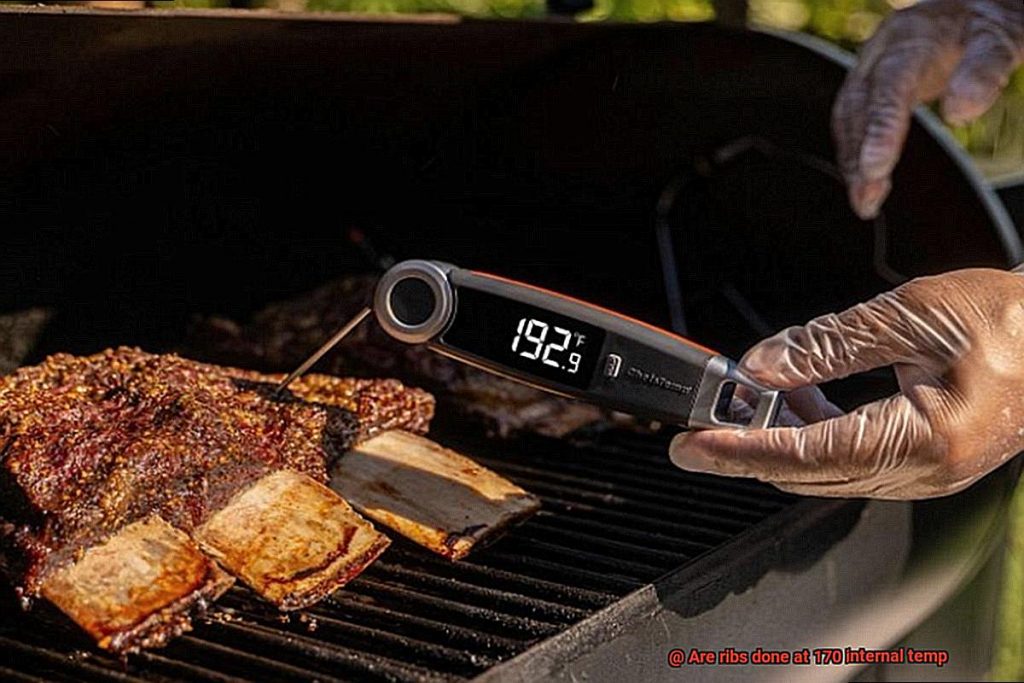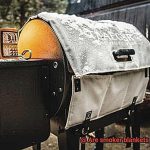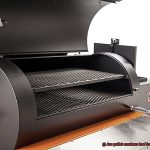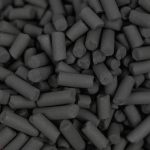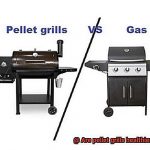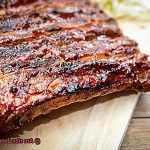Get ready to take your grilling skills to the next level and serve up some mouthwatering ribs.
If you’ve ever wondered about the perfect internal temperature for cooking ribs, then this blog post is your ultimate guide. Now, here’s the thing: while there’s a lot of debate among grilling enthusiasts, experts agree that ribs are not quite done at 170°F.
Surprising, right? To achieve that heavenly tenderness and flavor explosion, you need to cook them a bit longer.
So grab your apron, fire up the grill, and let’s dive in together.
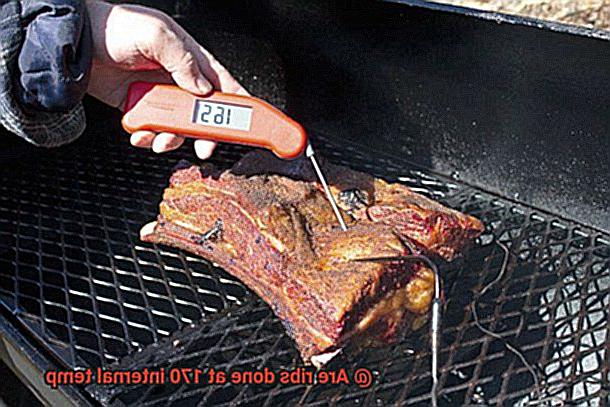
Contents
What is the Internal Temperature of Cooked Ribs?
One of the key factors in determining whether your ribs are cooked to perfection is the internal temperature. In this article, we will explore the recommended internal temperature for cooked ribs and provide tips on how to achieve tender, juicy, and flavorful results every time you fire up the grill.
Finding the Sweet Spot:
When it comes to cooking ribs, there’s a range of temperatures that pitmasters and chefs agree on for optimal tenderness and safety. The general consensus is that ribs are typically done when they reach an internal temperature of around 190-203°F (88-95°C). At this temperature, the meat becomes tender, juicy, and starts to pull away from the bone, indicating that it is fully cooked.
Personal Preference Matters:
However, personal preference plays a significant role in determining the desired internal temperature of your ribs. Some people prefer their ribs to be a little less tender and more firm. In this case, an internal temperature of around 175-185°F (79-85°C) may be more suitable. At these temperatures, the meat may still be safe to eat but might not have reached its optimal tenderness.
Testing for Doneness:
To accurately measure the internal temperature of your ribs, it is essential to use a reliable meat thermometer. Insert the thermometer into the thickest part of the meat without touching the bone. Ensure that the thermometer is properly calibrated and follow the manufacturer’s instructions for accurate readings.
Remember that different cuts of ribs may have slightly different internal temperature guidelines. For example, spare ribs, which come from the belly area, may require a slightly higher internal temperature than baby back ribs, which come from the loin area.
Factors That Influence Cooking Times:
Factors such as cooking time, cooking method, and personal preference can also influence the desired internal temperature. Some pitmasters and chefs prefer to cook their ribs low and slow at a lower temperature for a longer period of time to achieve maximum tenderness, while others opt for a shorter cooking time at a higher temperature for a slightly firmer texture. It’s important to experiment and find the cooking method and internal temperature that suits your taste.
Beyond Temperature: Additional Indicators of Doneness:
While internal temperature is an essential factor in determining the doneness of your ribs, it’s not the only indicator to consider. Tenderness and bone pull-back are also crucial signs. To test tenderness, insert a toothpick or probe between the bones and feel for resistance. If it slides in easily with little resistance, the ribs are likely done. Additionally, when the meat starts pulling back from the bones, revealing more bone surface, it’s another sign that the ribs are reaching their desired level of doneness.
Why is 170°F (77°C) Not the Ideal Temperature for Ribs?
Imagine a sun-soaked summer day, the air filled with the tantalizing scent of smoky barbecue, and a plate of succulent ribs before you. Grilling ribs is an art that demands patience, technique, and most importantly, the perfect temperature. While the common belief is that ribs are done at 170°F (77°C), let’s embark on a flavor-filled journey to discover why this temperature doesn’t quite cut it.
The Science Behind Tender Ribs:
Ribs are renowned for their melt-in-your-mouth tenderness, which stems from the breakdown of collagen, a resilient protein found in connective tissues. At 170°F (77°C), the collagen has not had ample time to completely break down, resulting in meat that is chewy and less enjoyable.
The Ideal Temperature and Cooking Process:
- Low and Slow: To achieve succulent ribs, we must embrace the low and slow method. Set your grill or smoker to a temperature range of 225°F to 250°F (107°C to 121°C) and be prepared for a longer cooking time.
- The Magic Number: The sweet spot for perfectly cooked ribs lies around 185°F to 195°F (85°C to 90°C). This range allows the collagen to dissolve, resulting in tender, juicy meat that effortlessly falls off the bone.
- Flavors That Sing: Slow cooking at lower temperatures ensures marinades and rubs have ample time to penetrate the meat, infusing it with incredible flavors that will make your taste buds sing.
The Bark: A Flavorful Delight:
Cooking ribs at higher temperatures helps develop a coveted “bark.” This crispy and caramelized exterior adds an extra layer of flavor and texture that elevates your ribs to new heights. It’s a delicious contrast to the tender meat within.
The Importance of Resting:
Once your ribs reach the perfect internal temperature, it’s crucial to let them rest for a few minutes. This allows the juices to redistribute throughout the meat, ensuring every bite is a succulent, flavor-packed delight.
What is the Ideal Internal Temperature for Ribs?
Sink your teeth into a plate of perfectly cooked ribs, and you’ll experience a symphony of flavors and textures that is hard to beat. But what is the secret to achieving that ideal balance of juicy meat and fall-off-the-bone tenderness? The answer lies in understanding the ideal internal temperature for ribs. In this article, we will explore the science behind cooking ribs to perfection, uncovering the optimal temperatures, cooking methods, and tips to ensure your next rib feast is a resounding success.
The Myth of 170°F:
There’s a common misconception that ribs are done when they reach an internal temperature of 170°F (77°C). While this guideline may work in some cases, it doesn’t always yield the best results. The truth is, the ideal internal temperature can vary depending on factors such as the type of ribs, cooking method, personal preference, and desired texture.
Baby Back Ribs: Aim for 190°F:
For those succulent baby back ribs that melt in your mouth, a more accurate internal temperature to aim for is around 190°F (88°C). At this temperature, the connective tissues in the meat have fully broken down, resulting in tender and juicy ribs. Achieving this level of perfection requires patience and the use of low and slow cooking methods such as smoking or slow roasting.
Spare Ribs: Crank It Up to 200°F:
If you prefer heartier spare ribs with a bit more bite to them, aim for an internal temperature of around 200°F (93°C). This slight increase in temperature ensures that the meat is properly cooked and tender. Once again, low and slow cooking methods are your best friends here, allowing the collagen in the meat to break down gradually and infuse it with flavor.
Using a Reliable Meat Thermometer:
To accurately determine the internal temperature of your ribs, invest in a reliable meat thermometer. Insert the thermometer into the thickest part of the meat without touching bone for the most accurate reading. This will help you avoid undercooking or overcooking your ribs, ensuring that every bite is cooked to perfection.
Beyond Internal Temperature:
While internal temperature is crucial, it should not be the sole indicator of rib doneness. Visual cues can also guide you in determining if your ribs are ready to be devoured. Look for meat pulling away from the bone or bone protruding slightly from the meat, indicating that the ribs are cooked just right.
Experiment and Perfect Your Craft:
Ultimately, the ideal internal temperature for ribs may vary depending on personal preferences. It’s essential to experiment with different temperatures and cooking times to find your perfect balance of tenderness and flavor. Embrace the art of grilling, let your taste buds be your guide on this delicious journey, and enjoy the incredible flavors that perfectly cooked ribs bring to the table.
What Happens if You Cook Ribs at a Higher Temperature?
Understanding the impact of cooking ribs at different temperatures is key. While it may be tempting to crank up the heat for faster results, let’s explore why low and slow is the secret to achieving tender, flavorful ribs that will make your taste buds sing.
The Hazards of High Temperatures:
Cooking ribs at higher temperatures can have undesirable consequences. The proteins in the meat contract, squeezing out moisture and leaving you with dry, tough ribs. Moreover, rapid fat rendering can result in greasy and oily ribs, while burning sugars in sauces or rubs can create a bitter taste.
Discovering the Optimal Temperature:
Different types of ribs require different cooking temperatures. Baby back ribs thrive with a higher heat of around 275°F (135°C), while spare ribs excel at a lower temperature around 225°F (107°C). This allows for collagen breakdown and imparts a tantalizing smoky flavor.
Mastery of Low and Slow:
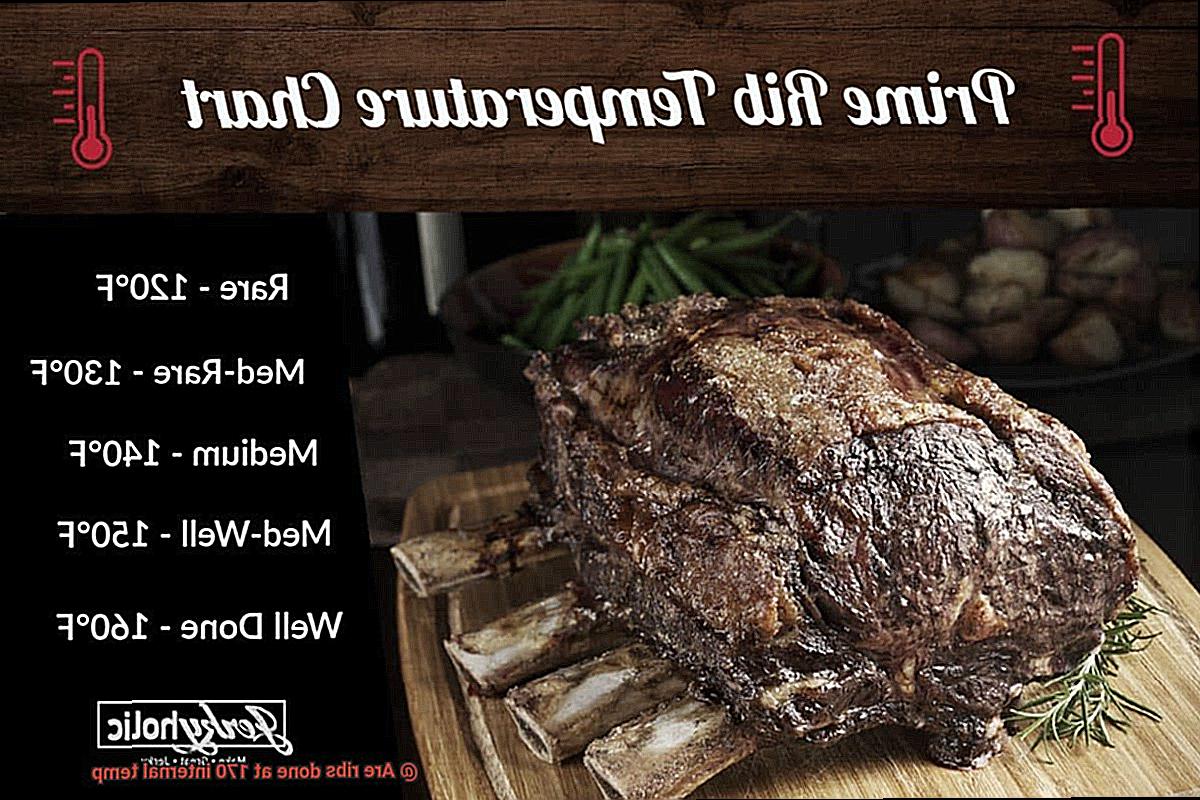
To achieve the juiciest, most tender ribs, embrace the low and slow method between 225°F (107°C) and 275°F (135°C). This slow cooking process permits gradual collagen breakdown, resulting in a melt-in-your-mouth texture and an explosion of rich smoky flavors.
Tips for High-Temperature Cooking:
If time is tight and high-temperature cooking is your only option, fear not. There are ways to mitigate negative effects. Wrapping the ribs in foil or butcher paper after a few hours helps retain moisture, while utilizing a water pan adds humidity and prevents drying out.
Different Styles of Ribs and Doneness Levels
Now, we embark on a journey through the realm of ribs, exploring the different styles and their delectable levels of doneness. Whether you’re a seasoned pitmaster or a novice to the grill, this guide will equip you with the knowledge to create mouthwatering ribs that will leave your guests begging for more.
Let’s begin our exploration with the various styles of ribs. First on our list are the baby back ribs. These petite delights originate from the top of the ribcage, boasting a smaller and leaner cut. If you crave tender, succulent ribs with a subtly sweet flavor profile, baby back ribs are your go-to choice. Next up, we have the spare ribs. These robust beauties hail from the underside of the ribcage, offering a larger and meatier experience. If you prefer your ribs with a bit more chew and an intensified pork essence, spare ribs are the path to gastronomic bliss. And finally, we encounter the St. Louis style ribs – spare ribs that have been expertly trimmed into a more rectangular shape. These gems strike a harmonious balance between tenderness and meatiness, earning them a cherished place in the hearts of rib enthusiasts.
Now, let us delve into the captivating world of doneness levels. The degree of doneness you desire for your ribs is a matter of personal taste and preference. Some revel in fall-off-the-bone tenderness, while others savor a slight resistance in each bite. Here are the three most common levels of doneness:
- Well-Done: Ribs cooked until they reach an internal temperature of 190°F or higher. At this pinnacle of perfection, the meat luxuriously surrenders to your touch, effortlessly detaching from the bone. If you yearn for ribs that melt in your mouth like buttery clouds, this level of doneness will transport you to carnivorous nirvana.
- Medium: Ribs cooked until they reach an internal temperature of 170°F to 180°F. At this equilibrium between tenderness and texture, the meat retains its supple nature while offering a delicate chew. Medium doneness caters to both tender rib aficionados and those who relish a gentle resistance in each succulent bite.
- Medium-Rare: Ribs cooked until they reach an internal temperature of 160°F to 165°F. At this audacious level, the meat unveils a subtle blush in its center, bestowing upon it a firmer texture. While less common for ribs, this doneness level invites the adventurous palate to savor a unique sensory experience.
Keep in mind that these temperature ranges may vary depending on the style of ribs you’re preparing and your personal inclination. To ensure your ribs achieve perfection, utilize a trusty meat thermometer and adjust the cooking time accordingly.
How to Determine if Your Ribs are Done
Grilling ribs is an art form, and achieving the perfect level of doneness is crucial to ensure a mouthwatering eating experience. In this comprehensive guide, we will explore the various methods you can use to determine if your ribs are cooked to perfection, focusing on an internal temperature of 170°F (77°C). Get ready to take your grilling skills to the next level.
The Significance of Internal Temperature:
Internal temperature is the ultimate indicator of doneness when it comes to cooking ribs. While the USDA recommends an internal temperature of 145°F (63°C) for pork ribs, achieving a higher internal temperature of around 170°F (77°C) will result in more tender and succulent ribs. This higher temperature allows the collagen in the meat to break down, resulting in that sought-after fall-off-the-bone texture.
Utilizing a Meat Thermometer:
To accurately determine if your ribs have reached the desired internal temperature, invest in a reliable meat thermometer. Insert the thermometer into the thickest part of the meat, making sure to avoid contact with bones or fat, as they can give false readings. When the internal temperature reaches around 170°F (77°C), your ribs are likely done and ready to be devoured. Remember to clean and calibrate your thermometer regularly for accurate results.
Mastering the Bend Test:
If you prefer a more hands-on approach, try the bend test to assess the doneness of your ribs. Using a pair of tongs, pick up the rack from one end and give it a gentle bend. If the meat begins to crack or slightly separate from the bone, it’s a sign that your ribs are perfectly cooked. However, if it holds its shape and doesn’t easily yield, they need more time on the grill.
The Visual Clues:
Our eyes can also provide valuable insight into the doneness of ribs. Look for a beautiful caramelized crust, known as the bark, on the outside of the meat. This indicates that your ribs have been properly cooked and will have a delightful flavor. Additionally, observe the bones starting to protrude slightly from the meat, which shows that they are becoming tender and nearing perfection.
Embrace Personal Preferences:
While an internal temperature of 170°F (77°C) serves as a reliable guideline, it’s essential to consider personal preferences when determining the doneness of your ribs. Some individuals prefer a little bit of chew and resistance, while others crave fall-off-the-bone tenderness. Experiment with different cooking times and temperatures to find the perfect balance that suits your taste buds.
Factors that Impact Cooking Time and Temperature
Grilling ribs is an art form that requires careful consideration of various factors to achieve succulent, tender, and flavorful results. In this guide, we will explore the factors that impact cooking time and temperature for ribs, enabling you to elevate your grilling game and create mouthwatering masterpieces.
Type of Ribs:
Different types of ribs require varying cooking techniques. Baby back ribs, spare ribs, and St. Louis-style ribs each have unique characteristics that affect their cooking time and temperature. Baby back ribs are smaller and more tender, requiring less cooking time than spare ribs. Understanding the characteristics of each rib type will help you determine the appropriate cooking time and temperature.
Thickness of Ribs:
Thicker ribs will naturally take longer to cook than thinner ones. To ensure even cooking, it is important to adjust the cooking time and temperature based on the thickness of your ribs. A meat thermometer can be a valuable tool in determining doneness.
Cooking Method:
The cooking method you choose greatly impacts the cooking time and temperature. Grilling at high heat will result in shorter cooking times compared to smoking at low heat. Experiment with different methods to find your preferred balance between tenderness and smoky flavor.
Desired Texture:
The texture you desire in your ribs also influences the cooking time and temperature. If you prefer fall-off-the-bone tenderness, a longer cooking time at lower temperatures is recommended. For a slightly chewier texture, higher temperatures for a shorter duration are ideal.
Moisture Content:
Consider the moisture content of your ribs when determining cooking time and temperature. Ribs with higher moisture content may require longer cooking times to achieve desired doneness. Consider marinating or basting your ribs to enhance moisture retention during cooking.
Altitude:
Altitude can affect cooking time and temperature due to variations in air pressure. At higher altitudes, water boils at a lower temperature, requiring adjustments in cooking time and temperature. Keep this in mind when grilling at higher elevations.
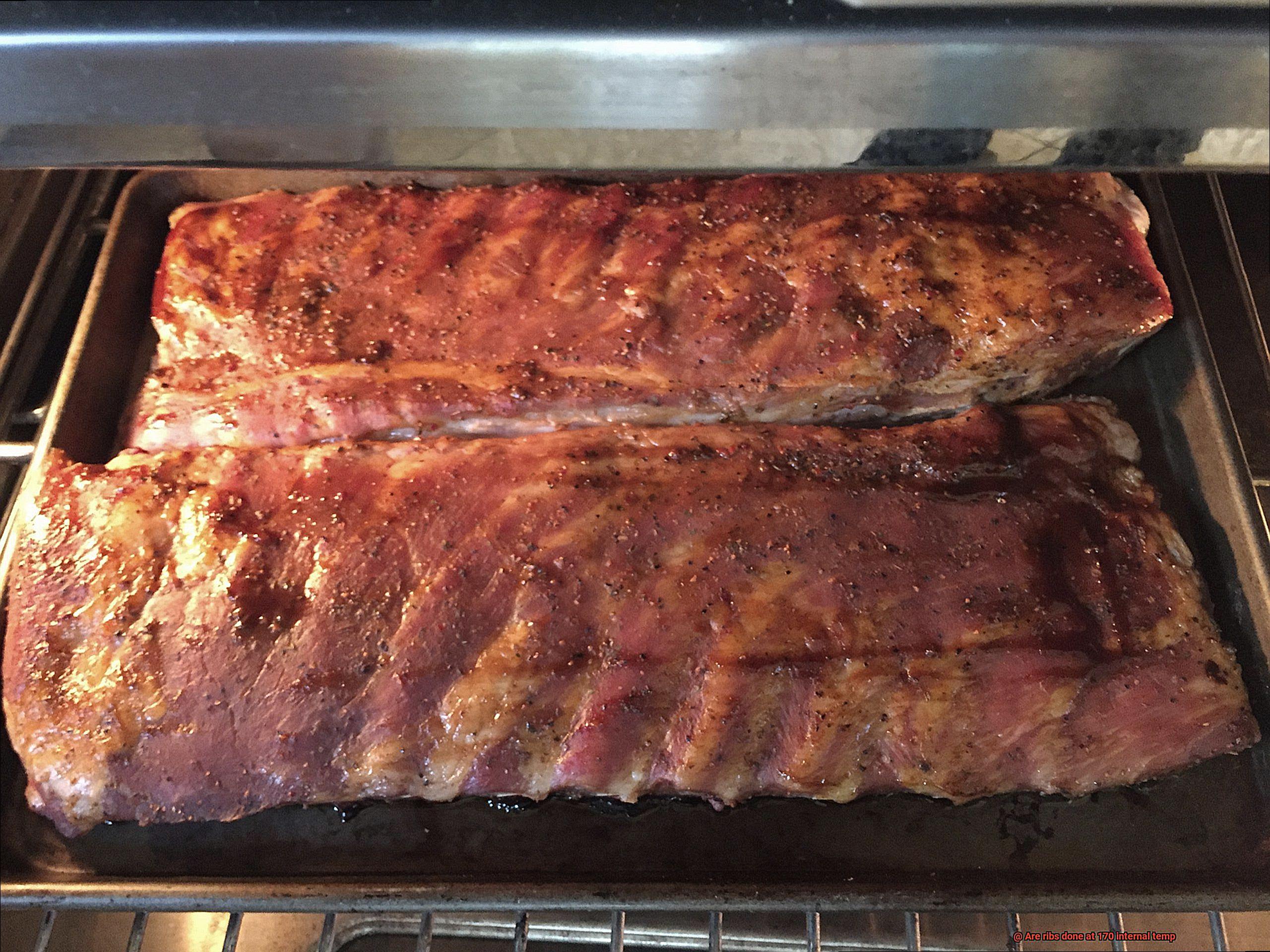
Oven or Grill Performance:
The performance of your oven or grill can impact cooking time and temperature. Ensure that your equipment is properly calibrated and provides even heat distribution. Regular maintenance and cleaning can optimize performance, resulting in consistent cooking results.
Tips for Achieving Tender, Flavorful Ribs Every Time
When it comes to grilling, nothing beats sinking your teeth into a perfectly cooked rack of tender, flavorful ribs. The kind that effortlessly falls off the bone, leaving you craving for more. But how do you achieve this level of barbecue mastery every single time? Fear not, because in this guide, we will uncover the secrets to cooking tender, flavorful ribs that will have your friends and family begging for your recipe.
Start with Quality Ribs:
To lay the foundation for mouthwatering ribs, begin by selecting a good-quality rack. Look for ribs that have a generous amount of meat on them and are well-marbled. Avoid racks that are too fatty or too lean, as they won’t result in the same succulent experience.
Prepare the Ribs:
Before you even think about firing up the grill, take a moment to properly prepare the ribs. Remove the tough membrane from the back of the ribs, as it can hinder flavor penetration and make your ribs chewy. Use a sharp knife to lift one corner of the membrane and then grip it with a paper towel to pull it off in one swift motion.
Seasoning is Key:
To take your ribs to the next level of flavor, generously season them with a dry rub or marinade. Create a tantalizing blend of spices like salt, pepper, paprika, garlic powder, and brown sugar to enhance the taste. Allow the seasoning to work its magic by letting it sit on the ribs for at least an hour before grilling. This will give ample time for the flavors to infuse into the meat.
Slow and Low Cooking:
The secret behind tender ribs lies in slow cooking at a low temperature. Aim for a temperature of around 225-250 degrees Fahrenheit (107-121 degrees Celsius) and let the ribs cook for several hours. This slow and low cooking method allows the connective tissues in the meat to break down gradually, resulting in tender and juicy ribs that are sure to impress.
Basting and Mopping:
To amplify the flavor and moisture of your ribs, consider basting or mopping them with a sauce or marinade during the cooking process. Every hour or so, use a brush or spray bottle to apply your chosen sauce, being careful not to overdo it. This technique will add another layer of complexity to your ribs and prevent them from drying out.
Resting:
Once your ribs have reached the desired internal temperature, resist the urge to immediately dig in. Allow them to rest for about 10-15 minutes before slicing and serving. This crucial step allows the juices to redistribute throughout the meat, resulting in a more tender and flavorful rib.
aOzmkDyHR-M” >
Conclusion
The conclusion is clear: ribs are not done at an internal temperature of 170 degrees.
At this point, the collagen in the meat has broken down, resulting in a melt-in-your-mouth texture that barbecue enthusiasts crave.

